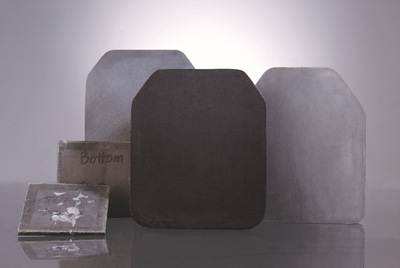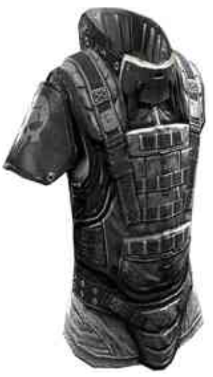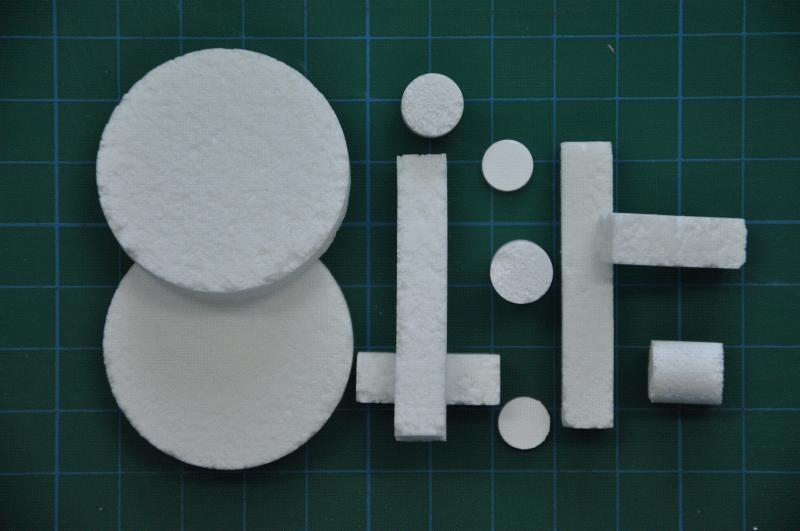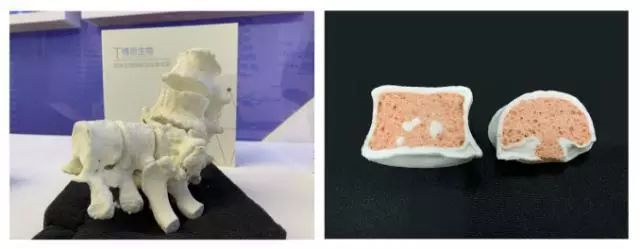Boron carbide ceramics are an important wear-resistant and high-hardness structural ceramic material in new ceramics. Because boron and carbon are both non-metallic elements, and their atomic radii are close, their bonding method is different from general interstitial compounds. Therefore, boron carbide ceramics have many unique excellent properties, such as high melting point, ultra-high hardness, low density, wear resistance, and corrosion resistance. They are increasingly showing their broad development and application prospects in fields such as national defense, nuclear energy, aerospace, machinery, and wear-resistant technology.

Figure. Boron Carbide Special Ceramic via the Internet
1. Characteristics of boron carbide ceramics
Boron carbide, a compound discovered as early as 1858, was not proposed and recognized until 1934 with the chemical stoichiometric formula of B4C.
Boron carbide is currently the third hardest material known after diamond and cubic boron nitride, with a hardness of up to 3000 kg/mm²; It has a low density, only 2.52 g/cm³, which is one-third of steel; it has a high elastic modulus of 450 GPa; it has a high melting point of about 2447℃; it has a low thermal expansion coefficient and high thermal conductivity. In addition, boron carbide has excellent chemical stability, acid and alkali resistance, and corrosion resistance. It does not react with acids, alkalis, and most inorganic compound liquids at normal temperature, and only has slow corrosion in a mixed solution of hydrofluoric acid-sulfuric acid or hydrofluoric acid-nitric acid. It does not wet or react with most molten metals. Boron carbide also has excellent neutron absorption capacity, which other ceramic materials do not possess.
The densification sintering of pure boron carbide is extremely difficult. This is because its covalent bond number is as high as 93.94%, higher than other structural ceramics such as SiC (88%) and Si3N4 (70%). This makes the elimination of pores inside boron carbide and the mass transfer mechanism of grain boundaries and volume diffusion require temperatures above 2000℃. For example, ordinary B4C powder can only achieve a relative density of 80%~87% at a pressure of 2250~2300℃. Sintering at such a high temperature will cause rapid grain coarsening and growth, which is not conducive to the elimination of pores and will result in a large number of residual pores, limiting the material's density. Therefore, the sintering of boron carbide must use effective additives or pressure sintering.
2. Applications of boron carbide ceramics
As mentioned earlier, B4C ceramics have low density (lower than SiC and Si3N4 ceramics), high hardness (higher than SiC and Si3N4), high elastic modulus, corrosion resistance, wear resistance, good neutron absorption performance, and good high-temperature semiconductor characteristics, so they are widely used in fields such as national defense, nuclear energy, and wear-resistant technology.
3.1 Bulletproof Armor
Due to the lightweight, ultra-high hardness, and high elastic modulus characteristics of B4C ceramics, they are the best material for bulletproof vests, bulletproof helmets, and bulletproof armor. Carbonized boron ceramics have been used as ceramic armor materials since the 1960s. Compared with other bulletproof materials such as SiC and Al2O3, B4C ceramics are lighter and harder, especially suitable for use as bulletproof armor materials for armed helicopters and other aircraft, effectively resisting bullets. Therefore, B4C ceramics are generally only used in special occasions with high requirements for protective performance, such as the crew seats of the US military's V22 "Osprey" tiltrotor aircraft. In addition, the enhanced body armor (EBA) used by the British army also uses boron carbide ceramics, which can defend against 12.7mm steel-core armor-piercing bullets.

Figure. "Interceptor" bulletproof vest
Boron carbide ceramics produced by the advanced ceramics division of BAE Systems in the UK have been used as the "Interceptor" bulletproof vest of the US military. In 1997, the US Army identified a research project on ceramic armor technology in the manufacturing technology plan, which mainly studied how to produce boron carbide (B4C) lightweight weapon protection insert armor used in the "Interceptor" bulletproof vest system on a large scale and at low cost. Units participating in this project include the US Marine Corps, the US Army Soldier and Biological Chemical Command, professional defense system companies, Simula Jishan Company, Cercom Company, as well as CoorsTek and Ceradyne companies. By 2012, a total of 68,000 sets of "Interceptor" bulletproof vests had been deployed on the battlefield.
3.2 Wear-resistant technology field
In the field of wear-resistant technology and engineering, various nozzles made of B4C with high hardness are used for sandblasting equipment nozzles for ship hull rust removal and high-pressure water jet cutting nozzles. B4C nozzles have the longest lifespan under harsh operating conditions, with a lifespan several times longer than that of Al2O3 nozzles and much longer than that of SiC and WC nozzles. They are a cost-effective choice and the best option for the sandblasting industry. The excellent chemical stability of B4C makes it suitable for use in nozzle of slurry and liquid grinding machines. B4C-made grinding bowls, grinding rods, and similar grinding devices are the preferred choice for chemical analysis work because they can avoid wear contamination during the grinding process.
Boron carbide can be used as a grinding material for other hard materials such as hard alloys and engineering ceramics for polishing, precision grinding, or crushing processes, replacing the previously used diamond abrasives and greatly reducing the cost of the grinding process. For example, boron carbide devices are used as pneumatic slide valves, hot extrusion dies, and shaft bearings for nuclear power plant cooling systems. They are also used as corrosion-resistant and wear-resistant components in ceramic gas turbines.
3.3 Nuclear energy field
In reactor core components, neutron-absorbing materials (control rods, regulating rods, accident rods, safety rods, and shielding rods) are important functional components second only to fuel elements. Due to the high neutron absorption cross-section, broad absorption spectrum, low cost, abundant raw material sources, and no strong secondary radiation after neutron absorption, boron carbide is an important neutron-absorbing material.
3.4 Thermocouples
By utilizing the thermoelectric properties of B4C, Japan and Germany have sintered thermocouples capable of measuring temperatures up to 2200℃ for high-temperature measurement and control. Its high thermoelectricity and stability make it suitable for long-term and reliable use in repetitive temperature measurements. The boron carbide/graphite thermocouple is composed of a graphite tube, a boron carbide rod, and a boron nitride sleeve between the two. It can be used in inert gas and vacuum environments up to 2200℃, and the potential difference is linearly related to the temperature between 600 and 2200℃.
3.5 Other applications
Due to the stability of B4C in molten iron and good thermal conductivity, it can be used in the continuous casting mold of the mechanical industry. Boron carbide's resistance to strong acid corrosion and wear makes it suitable for the shaft tips of flow transmitters for rocket liquid engines. B4C is also an excellent gas bearing material in long-life gyroscopes. Inertial gyroscopes are extremely important sensors in the inertial navigation and guidance systems of aircraft, ships, and aerospace vehicles.
3. Shortcomings of boron carbide ceramics
With the development of sintering technology, the excellent properties of boron carbide ceramics are becoming more and more prominent. Its products have special value for high-temperature, high-speed, and strong corrosive media encountered in modern process technology and have potential uses in many fields. Although boron carbide ceramics have been widely used, they still have some shortcomings, such as high cost, low fracture toughness, high sintering temperature (about 2300℃), poor oxidation resistance (begins to oxidize at 600℃ in air, rapidly oxidizes at 900℃), poor stability with metals (except for Ag, Cu, Sn, Zn, etc., it reacts with almost all metals to form metal borides), and difficulties in machining. These drawbacks restrict the large-scale application of boron carbide ceramic bulk materials. Therefore, in the future, it is necessary to regulate the structure and properties of B4C ceramics according to the requirements of actual operating environments and continuously improve and develop new sintering technologies to reduce manufacturing costs, improve reliability and toughness, and expand the application of boron carbide ceramics as an excellent engineering material.
Declaration: This article is provided by CERADIR™ users or obtained from Internet, the content does not represent the position of CERADIR™. We are not responsible for the authenticity/accuracy of the article, especially the effects of the products concerned. This article is for study only, it does not constitute any investment or application advice. For reprinting, please contact the original author. If it involves the copyright and/or other issues, please contact us and we will deal with it asap! CERADIR™ has the interpretation of this declaration.







